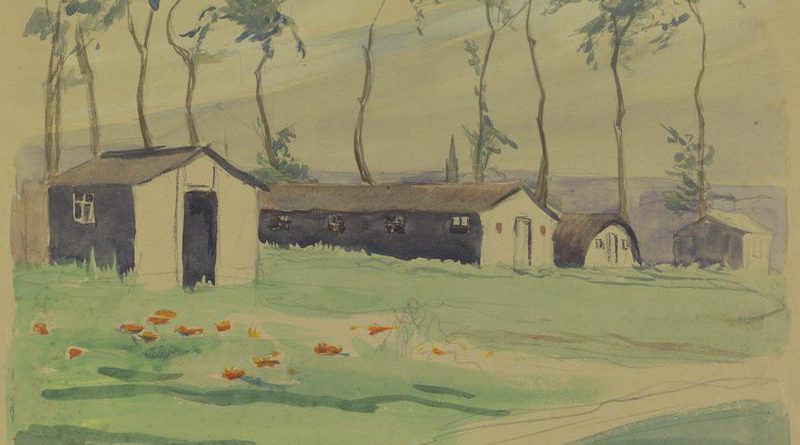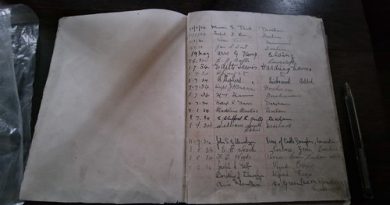Norfolk Regiment – October 1914 War Diary
Diary (in .pdf format – the war diary of the 1st Battalion of the Norfolk Regiment for October 1914)
I’ve downloaded most of the war diaries of the Norfolk Regiment from the National Archives (currently free of charge whilst the reading rooms are closed) and have become endlessly fascinated by them. They’re a real snapshot of what life must have been like, even though much of the detail is quite short. I’m also reading up on the lives of those who fought in the First World War, so this adds a fair chunk of detail to my understanding of where they were. And, this is why I’m trying to get a better understanding of where the battalion was, so I can try to have an understanding of the journey that the men went on.
Unfortunately, the August to September 1914 records for the 1st Battalion have got lost somewhere, so we have to start in October. I do know though that the battalion was fighting in Ireland when the First World War started, they mobilised on 4 August and then left Belfast on 14 August. From there, they arrived in Le Havre, France, a few days later. The diary for the month of October starts with the 1st Battalion marching to Droizy, with mention that it was cold.
On 3 October 1914, the battalion set off to Longpont (the photo above, © IWM Q 47947, is of Longpont, but shows the French defense in 1918, it was much quieter when the Norfolk Regiment arrived), which is around 15 kilometres away and it took them just over four hours. Longpont is only around 90 kilometres from Paris and this must have been something of an adventure for those there. The horrors of war weren’t yet perhaps quite obvious from this far away from the front line.
Longpont is dominated by an abbey which was forcibly closed during the French Revolution, and the troops arrived at 22:00 and slept in the woods in the village. They stayed the next day, 4 October, in the village and I wonder whether they were involved in training or had chance to look around the small village. After spending a day in the village they then went on a night march to Pondron and it took them around four hours, arriving on the morning of 5 October.
I like a night hike and find that there’s a sense of adventure in them, but I can’t quite imagine what it must have been like in wartime and in a military capacity. I’m assuming that the troops walked down the road and so looking at Google Street View, it’s possible to see what the men would have gone by. It’s not very built up now, so this would have likely been similar to walking in the Norfolk countryside in terms of the scenery. It was noted that the journey was inconvenienced with the number of French motors passing by, something I know from my walking can be a bloody nuisance (not French motors in particular, just cars in general). It would interesting to follow their journey, although they did later go by rail and road, although most of their route would be easy to walk (along with the occasional train journey).
On the 6 October, they marched from Pondron to Bethisy, where they stayed overnight, before crossing the River Oise on 7 October. I’m unsure why that needed a specific mention in the diary, unless the road wasn’t available and so they had to cross on foot, which would have been quite notable…. From here they went overnight by train to Abbeville, which must now have felt much closer to the front line action, should the men have been aware of what faced them.
After arriving in Abbeville (the painting above – © IWM Art.IWM ART 5394 – is by Olive Mudie-Cooke, an ambulance worker, painted in Abbeville in 1916/1917) at 04:00 on 8 October, the men then marched to Neuilly, where they arrived after seven hours of walking. They then had a period of rest before, later that same day, marching for over six hours to Boufflers. That couldn’t have been an easy day of walking, especially with the fear of the unknown that must have hung over them.
On 9 October, the men were meant to be transported by road, but the vehicles didn’t arrive. Instead, on 10 October, the men were taken by car to La Thieuloye and on the following day, 11 October, they marched to Bethune. At the time, this location was becoming increasingly important as a military meeting area and it was here that the men helped reinforce a French Cavalry outpost. This might have been when the Norfolk battalion started to meet other French troops for what could have been one of the first times.
The diaries note that the Germans took the nearby village of Vermelles on 12 October, with the Norfolk Regiment moving to Festubert that evening. Just to the south of this is the village of Givenchy and on 13 October, the Dorset and Bedford Regiments were attacked, with the Norfolk Regiment being ready to support, but the Germans didn’t pursue them.
It’s clear now that the movements were going to be slower, with the troops remaining at Festubert until the 16 October before making a few minor travels, and then ultimately, spending the rest of the month at Festubert. Two of the men were injured on 20 October, with Lieutenant Foley killed on 25 October. This must have felt pivotal, as although things were clearly getting more dangerous, to see a colleague lose their life must have been hugely challenging.
I couldn’t find any photos of the 1st Battalion of the Norfolk Regiment at Festubert, but this photo (© IWM Q 90282) was taken in the village a few months later, showing the Royal Field Artillery.






